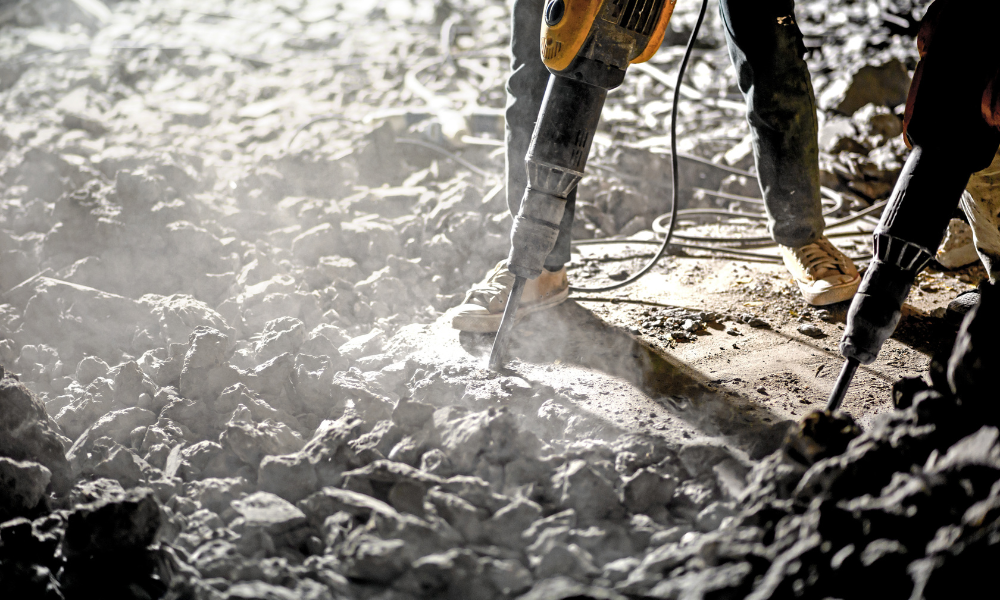A new report outlines the top 10 carcinogenic risks faced by workers in Quebec.
According to the report by the Institut de recherche Robert-Sauvé en santé et en sécurité du travail (IRSST), substances or conditions to which the greatest number of Quebec workers are exposed are as follows:
• solar radiation (6.6 per cent)
• night work or rotating shifts including night work (six per cent)
• diesel exhaust (4.4 per cent)
• wood dust (2.9 per cent)
• polycyclic aromatic hydrocarbons, excluding diesel exhaust (two per cent)
• benzene (1.7 per cent)
• silica (1.5 per cent)
• lead (1.3 per cent)
• artificial ultraviolet rays (1.1 per cent)
• mineral oils (one per cent).
Based on these percentages, it is estimated that at least 230,300 Quebecers are exposed to solar radiation and more than 150,000 to diesel exhaust in their jobs.
The number of workers potentially exposed to each carcinogen was obtained by applying the percentages of exposed workers in a given industry, calculated from various data sources, to the number of people working in that industry in Quebec according to the 2006 census data. The information on exposure was based on laboratory tests performed by the IRSST and a variety of other sources, including Health Canada data.
In several industries, more than 20 different carcinogens are present. These industries include manufacturing, construction, utilities, professional, scientific and technical services, administrative support, waste management and remediation services, found the report.
Among the manufacturing industries with exposure to multiple carcinogens are non-metallic mineral products, transportation equipment, primary metals, chemicals and paper.
More than 50,000 Quebec workers are exposed to carcinogens in manufacturing, transportation and warehousing, agriculture, forestry, hunting and fishing, and health care and social assistance.
Exposure to polycyclic aromatic hydrocarbons (PAHs), diesel exhaust, benzene and solar radiation affects most of the industries with a young labour force, including retailing, arts, entertainment and recreation, and accommodation and food services.
A breakdown of the data according to sex shows that more women are exposed to carcinogens in health care and social assistance (ionizing radiation, night work, artificial UV rays and solar radiation). Men are present in greater proportions in agriculture, forestry, hunting and fishing, mineral extraction, oil and gas, construction, utilities, manufacturing and transportation and warehousing. These industries are characterized by exposure to solar radiation, wood dust, night work, silica, diesel exhaust, mineral oils and lead.
The estimates are useful indicators of the extent of Quebec workers' potential exposure to carcinogenic substances, mainly because this is the first portrait of its type based on data aggregated from various sources, said the researchers.
Because cancers take several years to develop and it can be difficult to establish a link between a cancer and a given occupational exposure, the best strategy is prevention. The preventive approach for exposure to carcinogens is the same as for any occupational hazard: anticipation, identification, assessment and control (through elimination at source, substitution and reduction of exposure), as well as informing and educating employers and workers about carcinogenic substances.
According to the report by the Institut de recherche Robert-Sauvé en santé et en sécurité du travail (IRSST), substances or conditions to which the greatest number of Quebec workers are exposed are as follows:
• solar radiation (6.6 per cent)
• night work or rotating shifts including night work (six per cent)
• diesel exhaust (4.4 per cent)
• wood dust (2.9 per cent)
• polycyclic aromatic hydrocarbons, excluding diesel exhaust (two per cent)
• benzene (1.7 per cent)
• silica (1.5 per cent)
• lead (1.3 per cent)
• artificial ultraviolet rays (1.1 per cent)
• mineral oils (one per cent).
Based on these percentages, it is estimated that at least 230,300 Quebecers are exposed to solar radiation and more than 150,000 to diesel exhaust in their jobs.
The number of workers potentially exposed to each carcinogen was obtained by applying the percentages of exposed workers in a given industry, calculated from various data sources, to the number of people working in that industry in Quebec according to the 2006 census data. The information on exposure was based on laboratory tests performed by the IRSST and a variety of other sources, including Health Canada data.
In several industries, more than 20 different carcinogens are present. These industries include manufacturing, construction, utilities, professional, scientific and technical services, administrative support, waste management and remediation services, found the report.
Among the manufacturing industries with exposure to multiple carcinogens are non-metallic mineral products, transportation equipment, primary metals, chemicals and paper.
More than 50,000 Quebec workers are exposed to carcinogens in manufacturing, transportation and warehousing, agriculture, forestry, hunting and fishing, and health care and social assistance.
Exposure to polycyclic aromatic hydrocarbons (PAHs), diesel exhaust, benzene and solar radiation affects most of the industries with a young labour force, including retailing, arts, entertainment and recreation, and accommodation and food services.
A breakdown of the data according to sex shows that more women are exposed to carcinogens in health care and social assistance (ionizing radiation, night work, artificial UV rays and solar radiation). Men are present in greater proportions in agriculture, forestry, hunting and fishing, mineral extraction, oil and gas, construction, utilities, manufacturing and transportation and warehousing. These industries are characterized by exposure to solar radiation, wood dust, night work, silica, diesel exhaust, mineral oils and lead.
The estimates are useful indicators of the extent of Quebec workers' potential exposure to carcinogenic substances, mainly because this is the first portrait of its type based on data aggregated from various sources, said the researchers.
Because cancers take several years to develop and it can be difficult to establish a link between a cancer and a given occupational exposure, the best strategy is prevention. The preventive approach for exposure to carcinogens is the same as for any occupational hazard: anticipation, identification, assessment and control (through elimination at source, substitution and reduction of exposure), as well as informing and educating employers and workers about carcinogenic substances.





